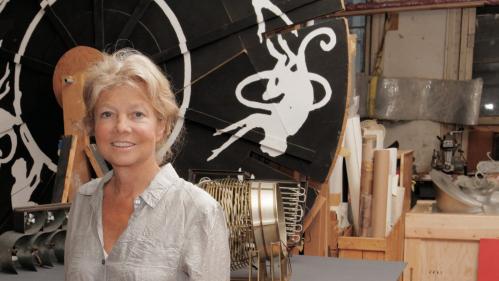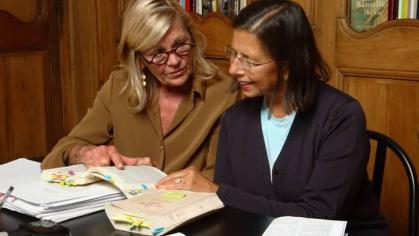Alice Aycock DC’68 is a prolific sculptor, celebrated teacher, and a Douglass alumna. From the Museum of Modern Art in New York City to the Sprengel Museum in Berlin, Germany, Aycock has displayed work in galleries all over the world. However, Aycock’s journey began on the Douglass campus, as a student in the College’s pioneering visual arts program.
In light of Joan Marter’s new book, Women Artists on the Leading Edge: Visual Arts at Douglass College, the Douglass College visual arts program has recently received attention for its progressive and avant-garde curriculum, faculty, and alumnae. Decades later, Aycock’s Douglass experience stands out in her mind for its creative intensity, intellectual rigor, and the ambition of her peers.
“We were not just being prepared to be married, we were being prepared to be professionals—lawyers, doctors, artists, scientists,” Aycock said. “We were taken very seriously. I was educated to compete at the highest level. The environment was exciting. It was dynamic.”
According to Aycock, the progressive environment at the school ran parallel to the changing social norms of the era. For student artists at Douglass, the world around them was a source of artistic inspiration, a call to affect culture with what they could create.
“The time period was radical—for women, for people of color—it was full of major breakthroughs,” she said. “We had to position ourselves within the cultural moment that we found ourselves.”
Faculty encouraged Aycock to pursue her art education through critical thinking. From the moment Aycock walked into the first day of Sam Weiner’s art history and studio course—a class she had initially only taken to fulfill a humanities requirement—Aycock knew that art, as it relates to life’s most intricate ideas, could be her future.
“Art was not taught just as a craft, but as a thinking practice within much larger contexts such as history, politics, and philosophy,” Aycock noted.
At Douglass, art was never detached from the reality outside the studio. This type of artistic instruction—which situated art in conversation with a complex world—allowed Aycock to thrive.
“Douglass gave me an excellent education in general. I needed that intellectual academic structure. I was not going to be an artist without it,” she said. “At the same time, had I gone elsewhere, I would have missed the creative marvel at Douglass. It was a phenomenally good balance between art education and the rigor of a liberal arts education.”
Aycock’s undergraduate education at Douglass, in its ability to both challenge and empower, positioned her to learn and create without the limits of social expectations.
“I had mostly men professors at Douglass, but I never looked at it as though I couldn’t be a part of critical dialogues and discourses,” she said. “I felt I could sit at the table next to anyone I wanted to sit next to.”
Since graduating Douglass, Aycock has experienced a robust career—producing an incredible amount of critically acclaimed work. In addition to her art, which has been displayed worldwide, she has taught at numerous colleges and universities. Since 1991, she has taught at the School of Visual Arts in New York City. She has been honored with a National Endowment for the Arts Fellowship four times and was awarded a Lifetime Achievement in Sculpture by the International Sculpture Center in March 2018. At the end of last month, Aycock returned to Douglass to discuss her experiences with peers, alumnae, and other members of the College community at The Zimmerli Art Museum in New Brunswick.



